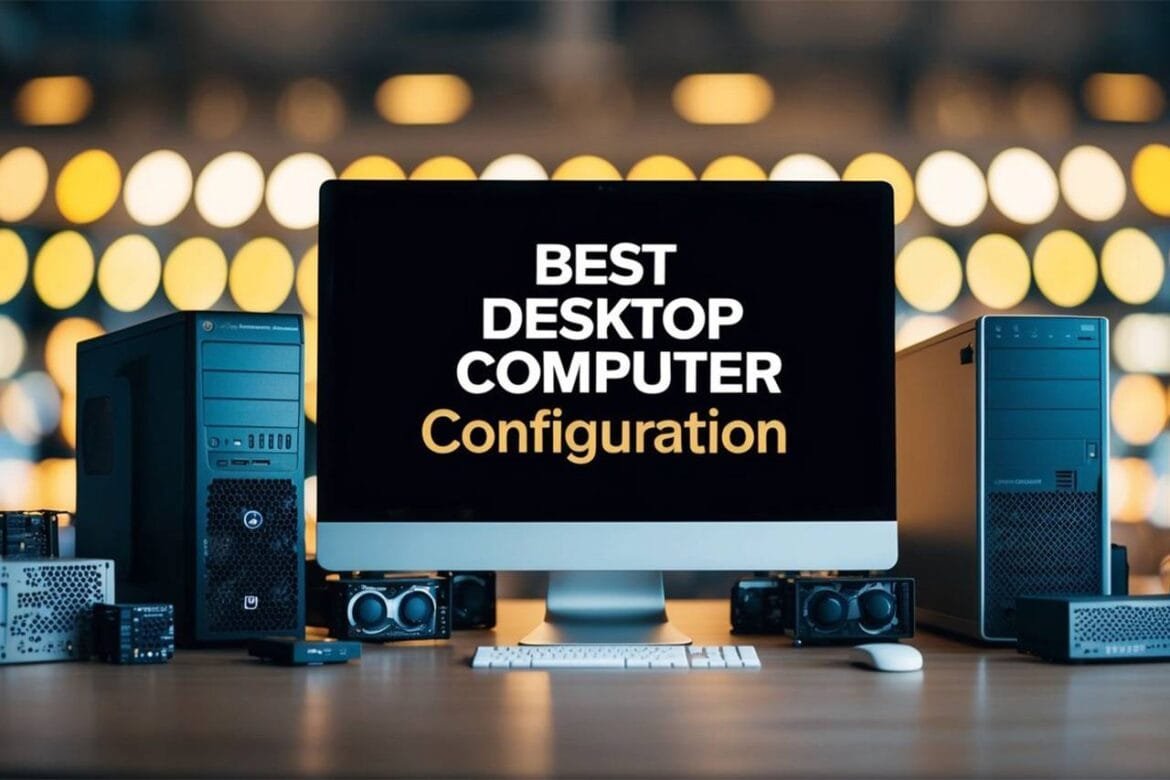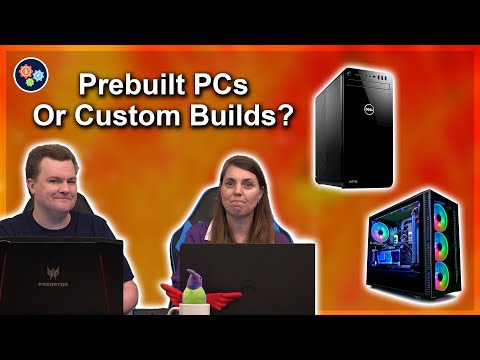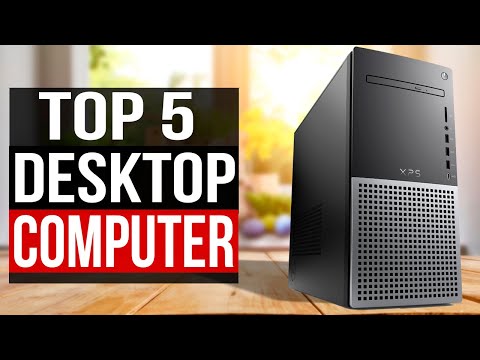Choosing the best desktop computer configuration can feel like navigating a maze. With so many options and features available, it’s important to find a setup that meets your needs, whether for work, gaming, or general use.
The ideal desktop computer configuration balances high-performance components with your specific requirements. This includes a reliable processor, ample RAM, a suitable graphics card, and sufficient storage. For instance, a configuration with an Intel Core i7 or AMD Ryzen 7, at least 16GB of RAM, an NVIDIA RTX 3060 graphics card, and a 1TB SSD offers great performance for both productivity and gaming.
In this guide, readers will explore detailed recommendations for the best desktop computers and how each element impacts performance and productivity. The article covers various configurations, ensuring you find the right fit for your needs.
JUMP TO:
Understanding Desktop PC Categories
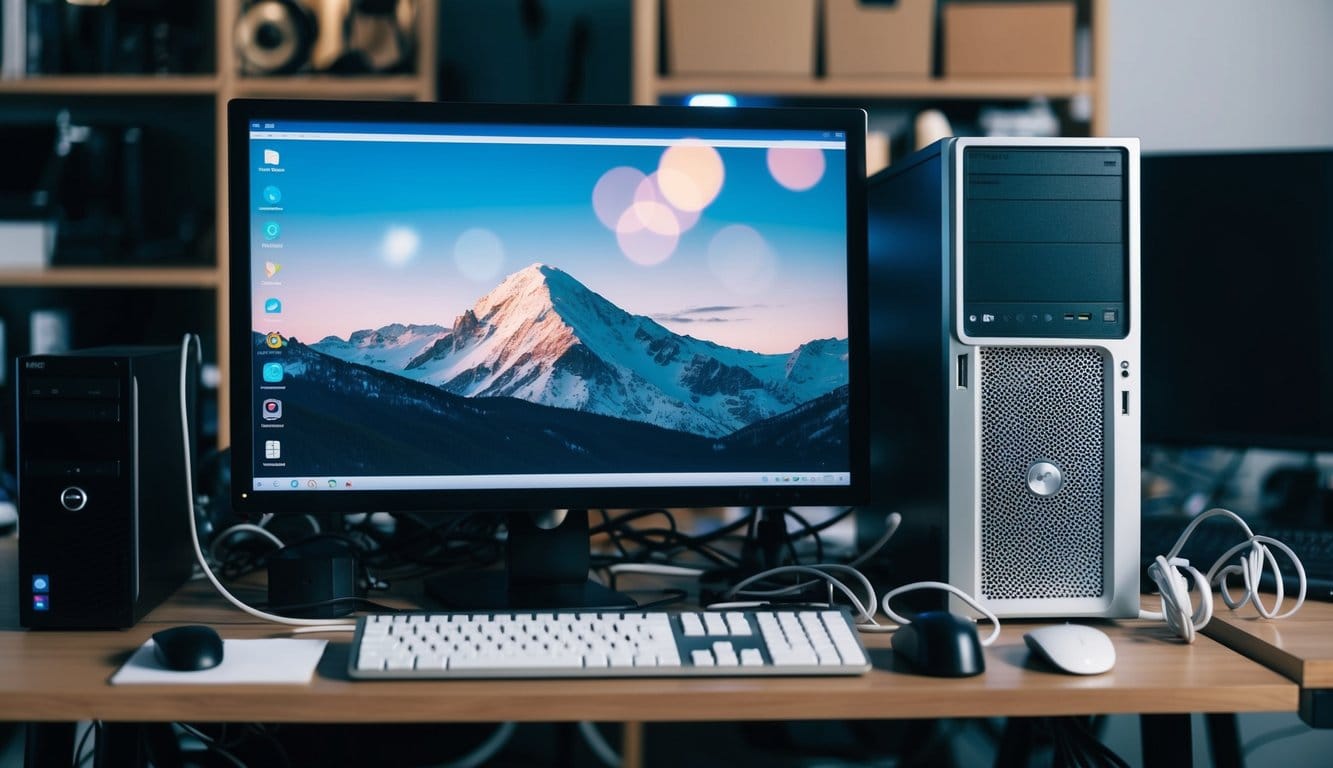
Desktop PCs come in various forms, each tailored for specific uses, from sleek all-in-one designs to powerful gaming rigs. Whether it’s compact options for tight spaces or robust machines for heavy tasks, there’s something for everyone.
All-in-One PCs
All-in-One PCs combine the computer and monitor into a single unit. They are great for saving space and reducing clutter, making them ideal for home offices or minimalist setups.
Many all-in-one PCs offer touch screen capabilities, enhancing user interaction. Although they provide convenience, their compact design can complicate upgrades. Popular brands like Apple’s iMac and HP’s Envy series are well-regarded in this category.
- Advantages:
- Space-saving design
- Less cable clutter
- Considerations:
- Limited upgradability
- Generally less powerful than traditional desktops
Gaming Desktops
Gaming desktops are built to deliver high-performance graphics and speed. They are equipped with powerful GPUs and ample RAM to handle the latest games with ease. Brands like Alienware and HP offer popular choices.
Features to look for include a dedicated graphics card and cooling systems to prevent overheating. They also come with customizable lighting and styling options, enhancing the gaming experience. These machines are often bulky due to their advanced hardware needs, so they require more setup space.
Mini PCs
Mini PCs pack a lot of power into a small frame, offering a compact solution for users with limited space. They are versatile, often used for media centers or basic computing tasks.
Options like the Mac Mini are favored for their sleek design and powerful performance. Though limited in graphics power, they excel in basic applications and are energy efficient. They are also great as secondary devices for homes or offices.
- Strengths:
- Small and portable
- Lower energy consumption
- Drawbacks:
- Limited upgrade options
- Not ideal for resource-heavy applications
Workstations
Workstations are designed for professional use, offering high-end computing power for tasks like video editing, 3D modeling, and scientific computations. They typically come with advanced processors and large memory capacities.
Dell and HP offer reliable workstations that cater to industry professionals. These machines often support multiple monitors and advanced graphics cards. Their robust build ensures reliability and speed for intensive workloads, but they come at a higher price point due to their performance capabilities.
Key Components of a Desktop PC
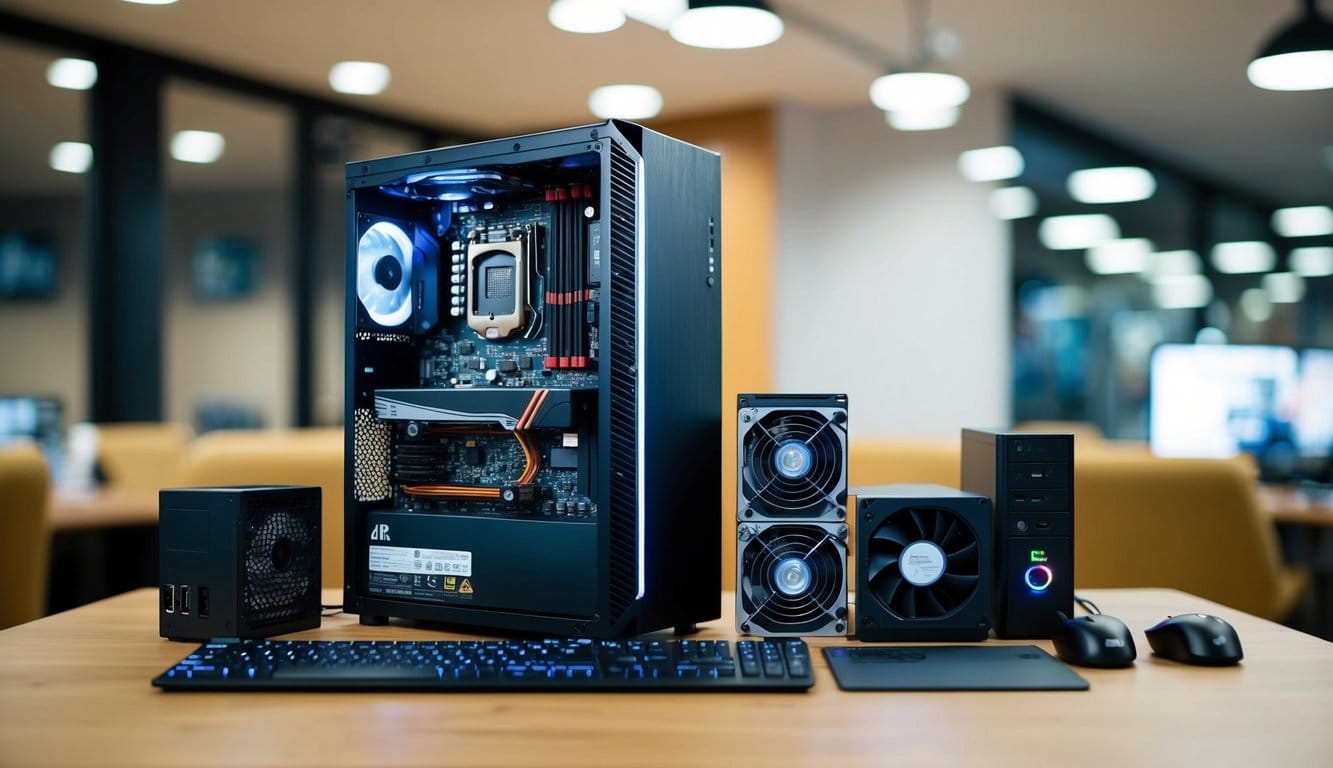
Building a reliable and efficient desktop computer involves several key components. These parts work together to ensure that your machine can handle tasks smoothly and meet your performance needs. The main components include the CPU, GPU, RAM, and storage solutions.
Central Processing Unit (CPU)
The CPU is often referred to as the brain of the computer. It handles all instructions sent to its way, word by word. Intel and AMD are the leading manufacturers of CPUs, with each offering a range of processors that cater to different performance levels and budgets.
Intel CPUs are popular for their high single-core performance, which makes them great for gaming and office productivity. AMD CPUs, on the other hand, offer excellent multi-core performance and are often chosen for tasks requiring significant computational power, like video editing.
One important factor is the clock speed, measured in GHz. Generally, the higher the clock speed, the faster the CPU can process data. Another consideration is the number of cores and threads, which can impact multitasking and performance in demanding applications. A good balance between cores, threads, and speed is crucial for optimal performance.
Graphics Processing Unit (GPU)
The GPU is responsible for rendering images and video. It is especially crucial for gaming, video editing, and any tasks requiring intensive graphical computing. Both NVIDIA and AMD are key players in this space.
NVIDIA’s GeForce series is renowned for its ray tracing and AI-driven enhancements, which offer incredible visuals in gaming and professional design work. Meanwhile, AMD’s Radeon series provides competitive performance, often with better price-to-performance ratios, making them appealing for budget-conscious users.
Choosing the right GPU depends largely on your intended use. Gamers and creative professionals should look for more powerful graphics cards with high memory bandwidth and robust cooling solutions.
Random Access Memory (RAM)
RAM is crucial for multi-tasking and running applications efficiently. The memory temporarily stores data that the CPU needs quick access to. Generally, more RAM allows for smoother performance when switching between applications or handling large files.
Most modern systems use DDR4 or DDR5 memory, with speeds typically ranging from 2133 MHz to over 5000 MHz. The amount of memory needed can vary: a minimum of 8GB is recommended for basic use, while gamers and professionals might opt for 16GB or more. It’s also useful to consider the memory’s speed and timing to get the best performance possible.
Choosing RAM with heat spreaders can also help in maintaining higher operation speeds without overheating, ensuring stability and longevity.
Storage Solutions
Storage solutions have come a long way, providing both speed and capacity. Traditional hard drives (HDDs) are affordable and offer large storage capacities, but are slower. Solid State Drives (SSDs), however, provide faster data access and boot times, enhancing the overall responsiveness of a system.
For those looking to balance speed with storage, many opt for a combination of an SSD for the operating system and primary applications, alongside an HDD for mass storage. SSDs come in various forms, with the SATA SSDs and NVMe SSDs being common options. NVMe drives offer faster read/write speeds compared to SATA, making them ideal for performance-oriented machines.
A versatile setup ensures quick access to frequently used data while still having sufficient room for bulk storage needs.
Optimizing for Performance and Productivity

Creating a desktop computer that excels in performance and productivity involves balancing various components. Key elements include choosing the right CPU and GPU, optimizing RAM and storage, and ensuring efficient cooling and power supply. Each part plays a crucial role in building a system that can handle demanding tasks without breaking a sweat.
Balancing CPU and GPU for Tasks
Selecting the right CPU and GPU is fundamental for a balance between raw power and multitasking. Intel’s Core i7 and i9 processors are popular for handling intensive tasks such as video editing and 3D rendering. They offer robust processing capabilities suitable for both gaming desktops and productivity setups.
For gaming enthusiasts, a powerful GPU can significantly enhance performance. Nvidia’s RTX series or AMD Radeon cards are top choices. These GPUs provide the graphics horsepower needed for high-resolution gaming and creative applications. Also, remember that a balance between CPU and GPU ensures neither becomes a bottleneck.
The Role of RAM and Storage Speed
RAM and storage speed are essential for smooth multitasking and quick data access. A minimum of 16GB of RAM is recommended for general productivity, while 32GB or more suits power users. Faster RAM can improve system responsiveness, especially in systems that use integrated graphics.
Storage speed often gets overlooked, but it is crucial for reducing load times. Solid-state drives (SSDs) offer rapid read and write speeds compared to traditional hard drives. For best results, consider NVMe SSDs over SATA SSDs as they provide even quicker performance. Using a combination of SSDs for essential software and HDDs for mass storage can be an effective strategy.
Cooling and Power Supply Considerations
Cooling is vital in maintaining optimal performance and extending the lifespan of components. Opting for liquid cooling can offer quieter and more efficient heat management compared to air cooling, especially when overclocking an Intel Core i9. Ensuring adequate airflow within the case also prevents overheating.
Power supply units (PSUs) should be selected based on the system’s requirements. A reliable PSU with an appropriate wattage supports stability and efficiency. Choosing a PSU with an 80 Plus certification guarantees energy efficiency, reducing waste and lowering electricity costs.
Choosing the Right Display

Choosing the right display can make a big difference in your computer experience. Key factors include resolution and size, as well as panel types and refresh rates.
Resolution and Size
When selecting a monitor, resolution and size are essential factors. They determine the clarity and detail of the images you see. Common resolutions include 1080p, 1440p, and 4k.
- 1080p (Full HD): Good for basic tasks and offers solid clarity.
- 1440p (Quad HD): Offers clearer images and is great for gaming and graphic design.
- 4k (Ultra HD): Provides exceptional detail and is ideal for media professionals and movie enthusiasts.
Size-wise, monitors range from smaller 21-inch screens to large displays exceeding 32 inches. Larger screens are comfortable for multitasking or immersive gaming. Balance your workspace needs and budget when choosing.
How to Pick the Right Monitor for Your PC.
Panel Types and Refresh Rates
The type of panel impacts color accuracy and viewing angles. Common panel types include IPS, TN, and VA.
- IPS (In-Plane Switching): Offers excellent color accuracy and wide viewing angles, making it the go-to for graphic designers.
- TN (Twisted Nematic): Known for fast response times, it’s preferred by gamers.
- VA (Vertical Alignment): Balances color accuracy and viewing angles but can have slower response times.
Refresh rates affect how smooth motion appears on screen. Gamers should look for higher refresh rates like 120Hz or 144Hz to reduce motion blur.
Connectivity Options

Modern desktop computers offer a range of connectivity options to enhance user experience and flexibility. Key areas include ports for peripherals, options for internet and networking, and capabilities for wireless and Bluetooth connections.
Peripheral Connections
Nowadays, desktops are equipped with various ports to connect external devices. USB-C and USB-A ports are standard and offer different utility; USB-C is noted for its speed and ability to deliver power. Front USB-C ports are particularly handy for quick access. Other common connections include HDMI for video outputs and audio jacks for sound devices.
Internet and Networking
Desktops require stable internet connections and often support both wired and wireless networking. Ethernet ports provide robust, uninterrupted internet via a physical cable, which is helpful for gaming and downloading large files. For wireless options, Wi-Fi 6E is the fastest and most reliable, supporting high-speed internet across multiple devices.
Home networking has gotten much more efficient with these advancements. Wi-Fi 6E routers are worth the upgrade for their improved signal strength and range. Always consider whether these features are part of your desktop’s setup to ensure you get the best internet experience.
Wireless and Bluetooth Capabilities
Bluetooth connectivity is essential for pairing with wireless peripherals like keyboards, mice, and headphones. Bluetooth 5.3 is currently top-notch, offering improved speed, range, and energy efficiency compared to earlier versions. This is particularly useful if connecting multiple devices at great distances.
Furthermore, Bluetooth 5.3 allows for a more stable and efficient connection, reducing lag and interference. When setting up a desktop, checking for this version can save you from connectivity headaches and is worth ensuring is included in the configuration.
Expandability and Upgrade Potential

For a desktop computer, expandability is key to keeping up with changing technology. Users often look for systems with room to grow, allowing them to add new components or upgrade existing ones.
Configuration Options:
- Many desktops offer open slots for additional RAM.
- Extra bays can accommodate more storage drives.
- Graphics card slots allow for video upgrades.
Upgrade Potential:
- Desktops with standard components are easier to upgrade.
- Look for models with removable panels for easy access.
- Avoid systems with proprietary parts that limit customization.
External Drives:
They provide a versatile way to expand storage without opening the case. They also allow users to easily move files between systems. USB and Thunderbolt drives are popular options for quick plug-and-play expansion.
When choosing a desktop, consider how much flexibility you might need later on. Whether adding an external drive or upgrading internally, expandability can save money and extend the life of your system.
Brand and Manufacturer Considerations
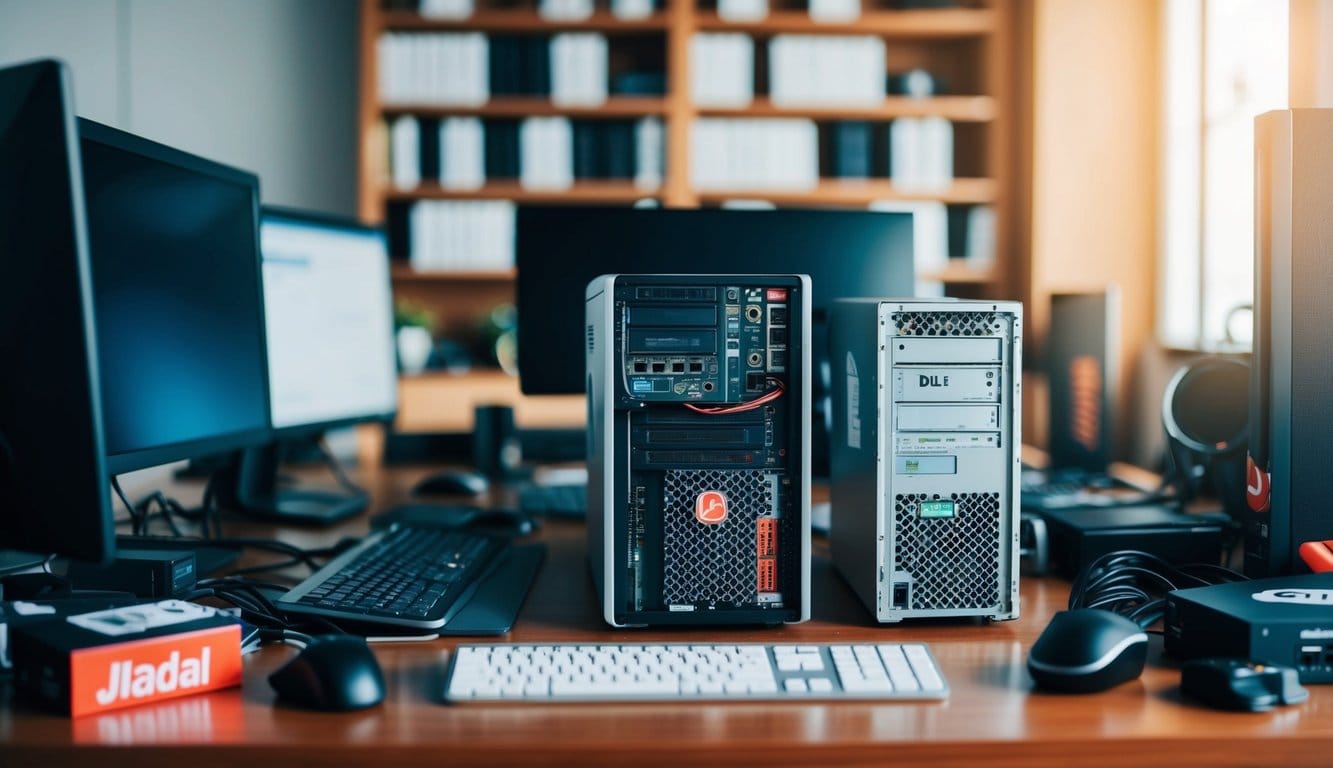
Choosing the right desktop computer involves understanding the brands and manufacturers. Each offers unique features, specifications, and support, crucial for making an informed decision. Here’s a closer look at some of the leading brands, how their specs measure up, and what kind of support they provide.
Established Brands in the Market
Many reputable brands lead the desktop computer market. Dell is known for its versatile and budget-friendly options. HP offers a wide range of desktops, from all-in-one to powerful gaming PCs.
Apple iMac stands out with its sleek design and strong performance, while the Apple Mac Mini is a compact alternative. Acer and Asus provide valuable models, often favored for gaming and multimedia.
Other notable mentions include the Lenovo Legion Tower 7i, known for gaming, and Alienware Aurora R16, which is geared towards performance enthusiasts. These brands continuously update their product ranges, ensuring a blend of modern technology and reliability. The choice depends largely on the user’s specific needs and budget.
Comparing Manufacturer Specifications
When comparing specs, it’s crucial to focus on factors that influence performance. Dell and HP offer varied configurations often with Intel UHD graphics, catering from everyday use to high-performance tasks.
Apple iMac and Mac Mini are equipped with their proprietary chips, delivering impressive speed and efficiency. Asus and Acer often boast enhanced graphics cards, making them reliable for gaming and design purposes.
Below is a simple breakdown of typical specs from popular brands:
| Brand | Typical RAM | Processor | Graphics |
|---|---|---|---|
| Dell | 8-32 GB | Intel i3-i9 | Intel UHD |
| Apple iMac | 8-16 GB | M1/M2 | Integrated |
| Lenovo Legion 7i | 16-32 GB | Intel i7-i9 | Discrete options |
| Alienware Aurora | 16-64 GB | AMD/Intel | Discrete options |
Selecting based on specifications means aligning the device with your needs, whether it’s general use, gaming, or creative work.
Warranties and Customer Support
Reliable customer support and solid warranty options can significantly enhance the user’s experience with a desktop computer. Dell and HP offer extensive warranty packages and a variety of customer service contacts to aid users in case of technical issues.
Apple’s support is well-regarded, often praised for its efficiency and ease of accessing help, both online and in-store. Asus and Acer also provide substantial warranties, typically covering key components with options for extended coverage.
For gamers, Alienware ensures robust customer service, which is crucial for high-performance machines. Consider the support and warranty options when purchasing, as they play a vital role in maintaining the desktop’s longevity and performance.
Prebuilt vs. Custom-Built Desktops
Choosing between prebuilt and custom-built desktops can be a crucial decision based on needs, budget, and technical expertise. Both options have distinct advantages and considerations that can influence the choice.
Advantages of Prebuilt Systems
Prebuilt systems offer convenience and speed. With brands like Corsair One i500, everything is assembled and ready to go upon purchase. This is perfect for those who need a gaming rig or professional workstation without the hassle of building.
Benefits of Prebuilt Systems:
- Time-saving: No time spent on assembly.
- Warranty: Often includes comprehensive warranties covering the entire system.
- Support: Customer support is readily available for troubleshooting.
These systems usually come with a keyboard and mouse, and sometimes an operating system, making setup a breeze for users.
Benefits of Custom-Built PCs
Custom-built PCs provide flexibility and personalization. By selecting each component, users can tailor the computer to their specific needs and budget, allowing for bespoke setups like high-performing gaming rigs.
Custom Build Advantages:
- Performance Optimization: Choose high-end parts for gaming or graphic design.
- Cost Control: Select components that match budget constraints.
- Upgrade Paths: Easier to upgrade as new technologies emerge.
Building a PC also offers a learning experience, enhancing one’s knowledge about how computers function.
What to Consider When Building Your Own
Building your own desktop requires attention to detail and planning. Key considerations include budget alignment, part compatibility, and future-proofing the system with flexible upgrade paths.
Considerations for DIY Builds:
- Compatibility: Ensure all parts are compatible with each other.
- Tools: Gather all necessary tools for assembly, such as a screwdriver.
- Research: Study tutorial videos, to avoid common pitfalls.
Making a custom-built PC from scratch can initially seem overwhelming, but with the right guidance, it becomes an achievable task that offers an immense sense of satisfaction upon completion.
Current Trends and Innovations
Desktops today are packed with cutting-edge technology. This includes powerful CPUs and GPUs for speed and graphics, faster storage solutions like SSDs, and advanced connectivity options like Wi-Fi 6E and USB-C, providing a seamless experience for tasks and gaming.
The Latest CPUs and GPUs
Processors and graphics cards have seen significant upgrades. Apple’s line, including the M2 Pro, M2 Max, and M2 Ultra, offers striking performance for professionals and creatives. These CPUs are known for their power efficiency and integrated graphics capabilities, making them ideal for demanding tasks like video editing and 3D rendering.
NVIDIA’s GeForce RTX 4070 and RTX 4060 Ti represent another leap forward in graphics technology. Designed for gamers and content creators, these GPUs provide lifelike visuals thanks to real-time ray tracing and AI-enhanced graphics. These advances ensure stunning detail and smooth gaming experiences for even the most demanding titles.
Next-Generation Storage
Storage is evolving with solid-state drives (SSDs) leading the charge. SSDs offer faster data access compared to traditional hard drives, reducing load times for applications and games. This means less waiting and more doing, a critical factor for both productivity and entertainment.
Emerging technologies like NVMe SSDs further boost speeds by using faster interfaces, enabling quicker boot-up times and data transfers. These high-performance drives are ideal for users who handle large files regularly or need to speed up their system. For an insightful explanation, a video on the benefits of NVMe SSDs can be quite helpful.
Advancements in Connectivity
Modern desktops are equipped with next-gen connectivity options. Wi-Fi 6E extends wireless performance, offering higher speeds and lower latency, which is vital for streaming and online gaming. This ensures strong, reliable connections, reducing lag and buffering.
USB-C ports have become standard in desktops, providing versatility and power. With faster data transfer rates and the ability to charge devices, they simplify connectivity by consolidating all features into one type of port. Additionally, Thunderbolt 4 enhances connectivity further by supporting ultra-high-resolution displays and fast data transfers, benefiting both productivity and gaming setups.
Conclusion
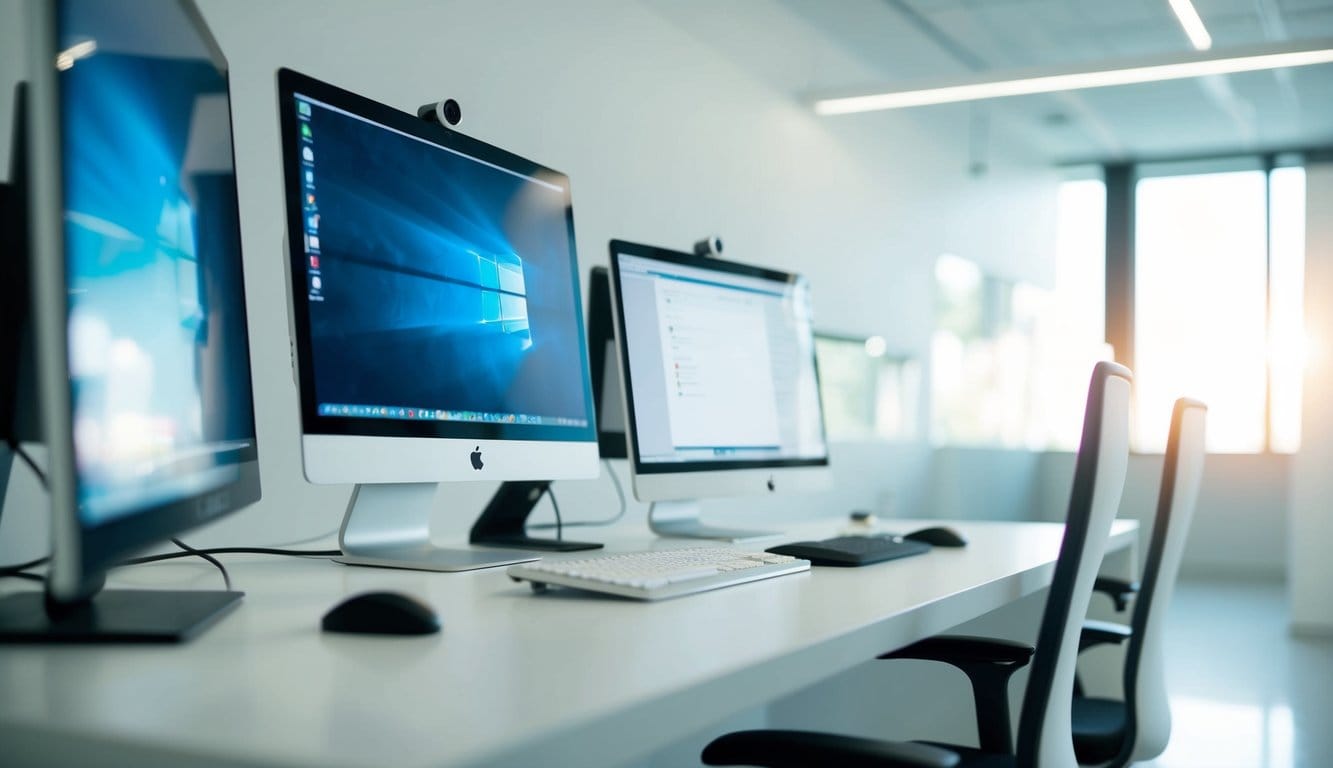
Choosing the best desktop computer configuration depends on individual needs and preferences. Whether it’s for gaming, work, or everyday use, different configurations cater to varied requirements. The key is to balance performance with budget and purpose.
Essential Considerations:
- Processor: A high-end Intel Core i9 or AMD Ryzen for gaming and intensive tasks.
- Graphics Card: NVIDIA RTX 4090 for top-tier gaming experiences.
- RAM: At least 16GB, with 32GB or more for demanding applications.
- Storage: SSDs for speed, aiming for at least 1TB.
Popular Choices:
- Best Gaming PC: Alienware configurations often excel due to powerful GPUs and processors.
- Best All-in-One Desktop: Apple Mac Studio offers a compact design with robust performance.
- Best Budget Desktop: Acer Aspire TC-1780-UA92 for a mix of efficiency and cost-effectiveness.
In the end, determining the best fit involves examining specific needs, whether for gaming, professional work, or general use. By carefully considering each component, one can tailor a desktop that offers both reliability and performance. Stay informed and select a configuration that resonates with personal or professional goals.
